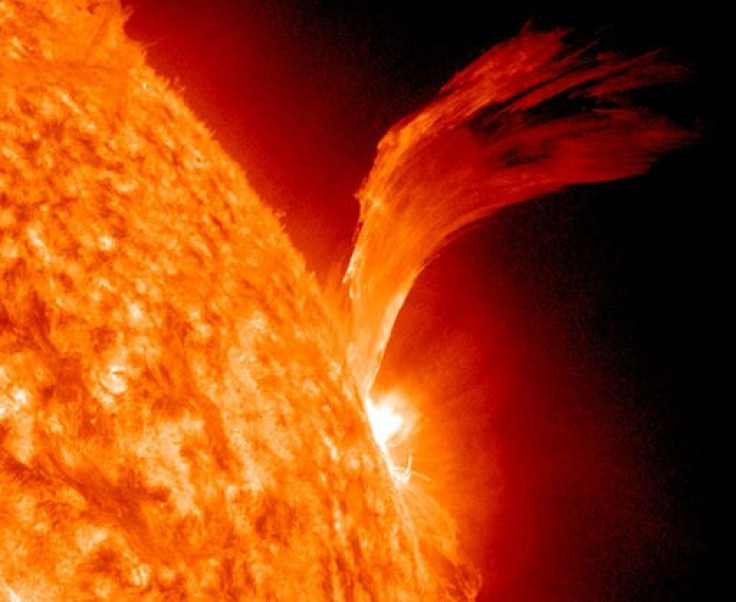The Most Powerful Solar Flare since 2005 [VIDEO]

A powerful and fast-moving solar flare, which erupted on the surface of the Sun on Sunday, at 10.59 p.m., is heading towards Earth.
Solar flares can affect power grids, long-range communication devices and satellites. However, it can also make for spectacular displays of natural lighting, most notably the Aurora Borealis (the Northern Lights), for sky watchers; the lights should be on display on Tuesday, at 9 a.m. ET.
Meanwhile, astronomers from NASA have confirmed that the solar flare - a large M-Class phenomenon - will result in one of the strongest solar radiation storms the Earth has seen since 2005.
According to NASA's Space Weather Service, the flare is travelling at 1,400 miles per second and will reach Earth on Tuesday morning. The eruption came from Sunspot 1402, which has been active over the past few days.
The solar flare occurs when magnetic energy built up in the Sun's atmosphere is suddenly released; the amount of energy released is equal to millions of hydrogen bombs exploding at the same time. Astronomers call this sudden release a coronal mass ejection - a massive burst of solar winds and magnetic fields rising above the Sun's atmosphere
Astronomers have classified solar flares into three types: X-class, M-class and C-class. X flares are the biggest and can effect radio blackouts and have long-lasting radiation impacts on the Earth. M-flares are the medium flares affect the Earth's polar region. C-class flares are the smallest and usually rarely noticeable.
The first solar flare recorded was on September 1, 1859, by two astronomers in England.
Watch this Video:
© Copyright IBTimes 2024. All rights reserved.





